One of my good friends from college, Kim, went to India twice to work with kids whose parents suffer from leprosy and therefore, are outcasts from society. I won’t say much about how I admire her efforts to make this world a better place and how proud I am to have such an amazing friend in my life. You can read this interview and get to know her yourself. And believe me, after reading this you will also want to become a better person and make your own contribution to this world!
1. Tell me about the organization – Where and when was it founded? Who founded it? What is its mission?
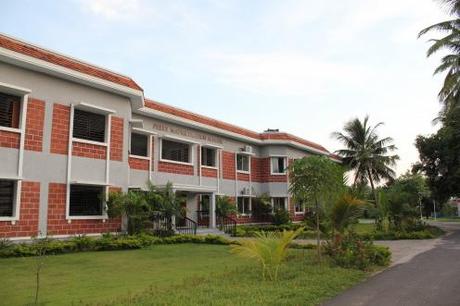
Rising Star Outreach is proof that beauty can always rise from tragedy. The organization was founded in 2002 around a kitchen table, after a woman named Becky Douglas visited the slums and orphanages of India attempting to come to a better understanding of where her recently deceased daughter had apparently been sending money before she died. It started as a small orphanage with 27 children in a house on the beach in Chennai – a major city in Southeast India. It was really successful and in 2005 they were able to rent another house in Chennai for 32 more kids.
As of 2010 the property boasted a hostel for all the children – split into eight different “families” (four male and four female), a large dining hall, the Peery Matriculation School, a hostel for the volunteers (affectionately known as “The Elephant House” because of the large elephant statue out front), and another house for long-term volunteers. There are also two large playing fields, a number of sand pits for volleyball, badminton and kabadi (a crazy Indian version of Tag mixed with Red Rover), a track and a playground. The dining hall has an enormous kitchen area and a live-in staff who make all of the food for the entire campus. The school is really advanced for India and has a computer lab, a science lab and a music room – in addition to all the regular classrooms.
One of the best parts about the Rising Star campus is that most of the buildings are open air, so as long as you have a fan going, you normally get a nice breeze. Another nice feature were the air conditioners in all of the rooms in the volunteer hostel – it was easy to fall asleep at night when you weren’t stuck to your bed from sweat, and after the long days working in the colonies and playing with the kids, it was probably the greatest luxury I could have asked for.
Right now, the main office in the US is based out of Provo, Utah and the official mission is “To help the leprosy colonies become thriving, self-sufficient communities through three major initiatives: To educate the colony children in a safe, healthy environment; To provide leprosy patients with their own small businesses using micro-finance; To address the unique health challenges of the colonies with mobile medical units.”
2. Tell me about your role at Rising Star? How did it evolve from the first time you went there?
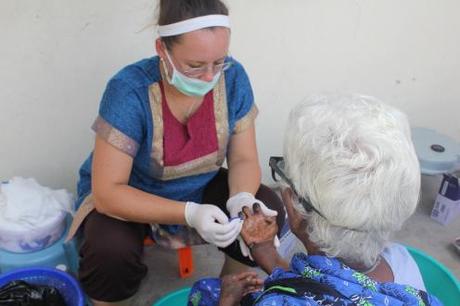
Lo-o-ong story short, I went from being a volunteer to running the program… but of course I will elaborate, haha.
During the summer of 2010 I was a volunteer with Rising Star. I applied to one of their summer sessions, was accepted, bought my plane ticket and a visa, got my shots and was India bound. This year, my role started in January, months before I even left the country. Two of their other coordinators, Kim and Derek, and myself would Skype and talk on the phone, planning and getting ready for the summer. My role at Rising Star this summer was volunteer coordinator and more specifically Construction Coordinator. I was in charge of the construction team that went out every morning and came back in the afternoon.
The summer consisted of five volunteer sessions, the first two lasting for three weeks each, the third – two weeks, the fourth – three weeks and the fifth and final session was also two weeks. The first session was different from the rest of the summer, as it was all medical. There were pre-med students from UC-Davis and a group of nursing students from Brigham Young University. It worked out perfectly though, because this group arrived right as the children were returning from their summer holiday – which lasts from mid-April through the end of May. Coming back from their villages the children need to be de-wormed and de-loused, given health check-ups and skin examinations. As they were coming back from colonies where people are affected by leprosy, it is always better to be safe and check all of the children for any unusual rashes, bumps, bites, etc. The best part about that session and all of the medical work were the amazing things I was able to be a part of that I probably would never have experienced otherwise – like watching a baby being born.
During Session 3 I took a group of 32 people north to Delhi and Agra – to see the Taj Mahal – and that was certainly a new experience. It was slightly nerve-wracking to be overseeing a group that large in a completely unfamiliar area. I had a long-term volunteer with me though, my friend Lex, who had stepped up as the acting Education coordinator for that session and was such a huge help.
I attended weekly meetings with the Directors – Jim and Pam – and Dr. Susan, the Indian Director. As coordinators, we were in charge of making sure everything ran smoothly (or as smoothly as possible for India). As I’m thinking back to everything I did this summer, it’s all getting garbled in my head. We did everything from organizing the volunteers, cleaning the Elephant house between sessions, laundry (lots and lots of laundry), the food orders, daily thoughts for the morning and nightly meetings, helping the housemothers with the kids, helping at the family weekends, running movie nights for the kids, organizing talent classes for the kids and volunteers… and that was on top of going out every day to the construction site and spending time with the kids, volunteers and the Rising Star staff. I honestly wouldn’t change one minute of it though (except maybe the two times I sprained my ankle and the time I dislocated my knee, haha).
3. Which part of India did you live? Please describe the village, weather, your living conditions, the school, etc.
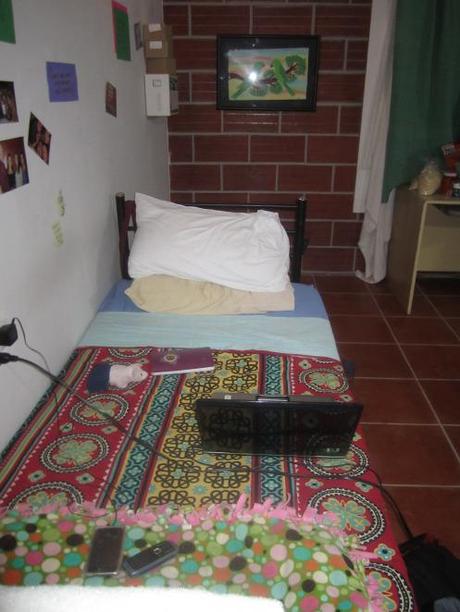
The official address of the Rising Star campus is Kadalmangalam Road, Thottanaval Village, Uthiramerur Taluk, Kancheepuram District, India (say that five times fast…).
The closest large town was about 45 minutes away called Chengalputtu and the closet major city was Chennai, about two hours away.
I was in Southeast India where it was hot and sticky 90% of the time. During the peak heat of the summer (June to mid-July) it averaged between 100-110 F during the day and would cool off to a balmy 95 F at night. I’d say the average temperature the rest of the summer was between 90 and 100. I remember one night it got down to about 85 F and I was actually cold. I put a sweatshirt on and was fine, but I couldn’t believe how my body had adapted to the weather. Toward the end of August and all through September it started cooling off, because the area where I stayed was moving into monsoon season. It felt like it was about 50 F, but in reality it was around 80 F.
While it seemed like I was in the middle of nowhere most of the time, the longer I stayed there the more familiar I became with the area. There was a pretty big town a 20-minute drive away and a lot of smaller villages that were fun to go to on bike rides. The typical homes were thatched huts or small concrete block homes.
The Elephant House is a giant rectangle with a courtyard in the middle and an outside hallway that leads to all the rooms. It has nine bedrooms, each with five to seven beds (lots of bunk beds), two community-style bathrooms (one for guys and one for girls), a living room area, a kitchen, and a room we call the closet – where all the extra towels, sheets and laundry are. It’s also where all the clothes the girls wear are. The girls have to wear traditional Indian clothes (chudidar pants and salwars) while being with the kids and in public.
4. Describe your daily responsibilities. What did you do during your work hours? What did you do during your free time? Was there any kind of entertainment nearby?

Each day the other coordinators and I were in charge of getting all the volunteers to where they needed to be and work with them in whatever we were doing. Since my role was construction coordinator, I took (NO, I did not drive!) the group to the colony where we worked. The colony’s name is Bharathapurham (pronounced Ba-rot-ta-purr-um) and we built outhouses and septic tanks. At the end of the summer, when the project was finished, we had completed 22 outhouses and 22 septic tanks. It was a lot of hauling materials – cement blocks, bricks, sand, cement, rocks, roofing, 500 lb. cement rings and giant cement plates – and a lot of blood, sweat and tears. I became highly skilled in the art of carrying things on my head!
After the structures were completed we painted the outhouses and did clean-ups around different colonies. We would get back from the colonies around two in the afternoon and everyone would be basically dying for the showers (which are bucket showers) because we were so sweaty and dirty. The volunteers officially had “free time” from 2 – 4.30 pm. At 4.30, playtime for the children starts, and no one wants to miss that. During play time I would normally play football (soccer) with the boys or run around on the jungle gym with the girls. After playtime is dinner and we would eat on the roof of the Elephant House every night. Around 7:30 pm we would head back over to the kids for “family time” where the volunteers would go and spend time with the children as they are doing homework, reading, playing in their rooms and getting ready for bed. The kids went to bed between 8.30 and 9 pm, so the volunteers head back to their rooms around then. Some nights we would play games or do fun things with them, but most of the time, everyone would just crash in their beds from pure exhaustion.
On the weekends, in between sessions, the long-term volunteers and the coordinators would usually go into Chennai or another city just to get off campus. There are malls, shopping and good food there.
When I first read this question, I actually laughed at the “free time” concept because it was so scarce. I was constantly “on” and there were even times when I would finally have a minute and I would sit on my bed to blog or email someone and literally fall asleep sitting up.
5. Did you get to travel in India? Where to? What was the most memorable trip/place? Why?
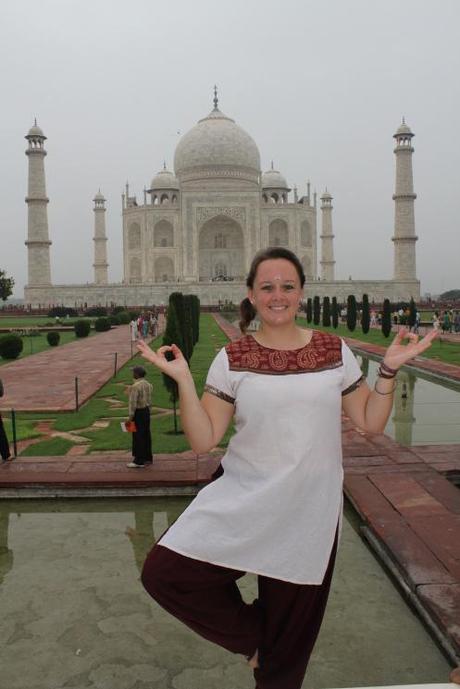
I was able to travel many places while I was at Rising Star. Last summer I went to Delhi and Agra – where the Taj Mahal is – and I was able to go back there for the second time this summer too.
My most memorable trip of the summer was during the first session when the medical group I was leading went out to the Dharmapuri region of India. It was about a 7-hour drive from Rising Star and there were beautiful mountains and waterfalls. It was so amazing – literally cool and breezy, which was so strange. The drive to get there was up and over a mountain, so the views were spectacular. We also went to a dam and it was just such an interesting site to see. It was this upper modern structure with a bunch of enormous Hindu statues and idols all around the grounds. Two of the other volunteers and I went up to the top of the dam and could see for miles. The next day we took a “boat trip” down the river. By boat I mean a giant weaved basket that looked like an oversized coconut. The boat “driver” (he was paddling with a stick) got us right under the falls and we were all soaked – but it was awesome! It was so amazing to see a completely different area of the country and the beauty was overwhelming.
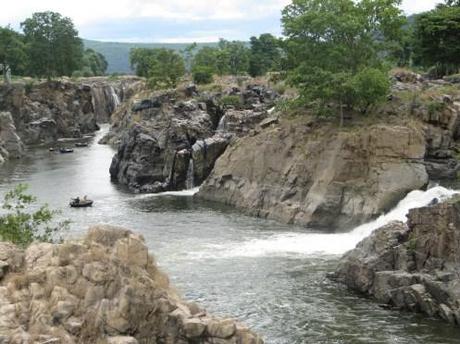
I also went to Mamallapuram – a beach town with great shopping, a picturesque beach and amazing ruins! The Blue Elephant is the best restaurant in town and its chicken fried rice is to die for.
Pondicherry is another beach town, and it is considered the “French area” of India. There’s a whole section of the city that doesn’t even seem like it is India. It was bizarre, but really beautiful, and they had great food too.
6. Was it safe to travel/walk around there as a woman? Do you have any tips on how to avoid potentially dangerous situations?

I honestly cannot think of a time when I felt legitimately unsafe. The campus is in a friendly area and has good ties with the local community and villages. Even when we went to Delhi, we had a tour guide. He looked out for us while we were up there, and back at Rising Star, the drivers looked out for us as if we were part of their family. They would make sure we knew exactly where we were going and even stop traffic so we could cross the busy streets, not even thinking that they themselves might get hit or hurt.
There was one day/night when I went on a bike ride with one of my friends to one of the teacher’s houses. She is my age and had been asking us to come over forever. So on a Sunday afternoon we rode our bikes to her village, about 10 km away, and she made us food and toured us around the area. We were having such a good time, we weren’t really paying attention to the fact it was getting dark. By the time we left it was pitch black outside AND starting to rain. We had to ride 10 km back on bumpy, pothole-ridden Indian back roads and only had a small flashlight to guide us. That was the one and only time in India I was actually scared. It took us over an hour and a half to make the trip that took up 40 minutes in the daytime. When we got back, we couldn’t believe we had made it back in one piece.
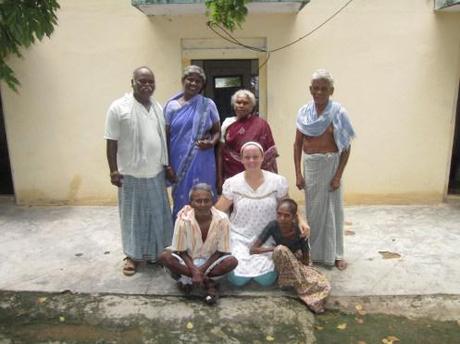
While I felt safe almost 100% of the time, that didn’t mean I wasn’t staying alert and aware of my surroundings. On campus, it was almost like we were in a bubble of security. The abduction rate, especially of Americans, is very high and there are a lot of rules that limit volunteers’ time outside the campus. Also, men are above women in their society, it’s just how it is, and even if some situations didn’t make sense, we had to accept it and move on because we were the foreigners in their land.
A perfect example of this was when I hung out with a few friends in the beach town of Pondicherry. There were five of us, two guys and three girls, and we were wandering around most of the day and finally made it to the beach. We found this huge pier that people were jumping off and it looked like so much fun. However, as we were looking around we noticed that the majority of the people at the beach were men. The two guys ran into the water and one of the girls followed and they were in for about 5 minutes. As they were walking out to go over to the pier (the other girl and I were taking pictures), an Indian man told my friend only men could swim there. It seemed completely bizarre that a woman couldn’t swim at a public beach, but when we turned around, we saw the women who were there were all further back on the beach just watching. It seemed ridiculous, and the girl said she was going to just go in anyway, but we had to stop her. It didn’t matter that it was “just a random guy” who told her she couldn’t swim. It was clearly a cultural thing and who knows what could have potentially happened if we hadn’t listened.
A lot of the safety issues had to do with the crazy traffic there. It’s the most organized chaos I’ve ever seen.
The best tip I can give is to be smart. It sounds so simple, but when people are enjoying a new country and a new culture, they often forget it’s NOT America and they can’t do everything they want. All the stuff your parents taught you when you were little: look both ways before you cross the street, don’t talk to strangers, don’t touch stray animals, pay attention… they all fit here.
7. How were the people there? Were they friendly?
They are some of the nicest people I have ever met in my life. Thankful and compassionate and have a true understanding of happiness and fulfillment in their lives. Some of the people I met will probably make less money in their entire lives than some people make in one month, but will be exponentially happier.
8. How was the food? Spicy? Did you like it?
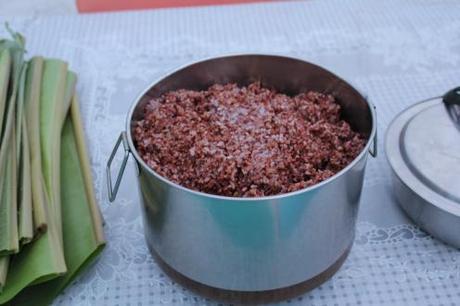
There was a point, about two months in, where I went on strike. Not a Ghandi-rescue hunger strike for a noble cause, but an “If I even see one more grain of red rice for the next two weeks I will lose my mind!” type cause. It’s not even that it’s not good, I had just been eating it every day, sometimes twice a day, for two months and I needed a change. Red rice is what the rice looks like before it’s de-shelled and it’s a lot healthier and more nutritious. Indians love their food spicy, so yes, it was hot, but most of the time bearable. Rising Star has its own cook and she knows not to make the volunteer dinners as intense as what the kids eat.
I think when people in America think of Indian food, they automatically think of what is most popular in northern India. That’s where the long-grain rice is and the naan and masala. In the southern area, the food is definitely spicier and slightly different. My two favorite foods are pharatha (pronounced per-O-ta) and lemon rice and eggs. My mouth is literally watering as I’m writing about them! Pharatha is doughy bread that’s fried. It is served with a green spicy dipping sauce and a fried egg with onions in it. You could get an entire meal (3 pieces of pharatha and an egg) for 40 rupee, which is less than $1. The lemon rice and hard boiled eggs is something that Padmini (the cook) would make a lot for lunch and on the weekends. It was pretty similar to how it sounds: yellow rice with lemon flavoring and tiny nuts and some spices. It was always served with hard-boiled eggs in a spicy sauce.
There was an American restaurant in Chennai called Sparky’s, and that served as a great place to go if you were really craving some American food.
9. Did you meditate or do your yoga?
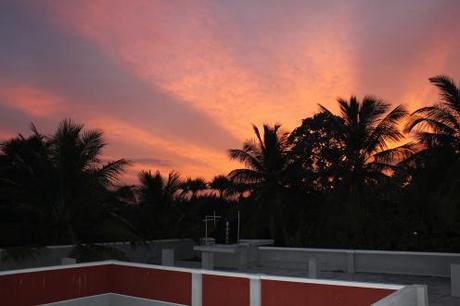
There is a dance program at the school called LifeDance – the “dance master” (an American dance teacher from the program Promethean Spark) generally knew yoga and there were a few volunteers who came through who also knew how to teach it. Sunrise yoga was always the best. From working all the time, especially in construction, my body would be super achy and tight and yoga would help so much.
In all the craziness of running a volunteer program, it was essential to take some time for yourself and the roof of the Elephant house and the steps of the school were my favorite places to go. Nights in India are incredibly peaceful. Being in the middle of nowhere, staring up at the sky, thousands of miles away from everyone and your “real life,” is extremely difficult to put into words. There were times I felt so withdrawn from the rest of the world, there could have been a major disaster and I wouldn’t have known at all. While it’s hard to imagine that kind of lifestyle when you’re caught up in everyday life here, it was so peaceful and it slowed down just about everything in my life (I’m really not sure how much sense I’m making, but I guess I’m trying to make the point that I meditated without actually meditating in the typical sense).
10. What was the overall impression from your trip? What did you learn? Did it change your life in any ways and how? Was it hard to adapt to your old lifestyle when you came back? Would you go back there?
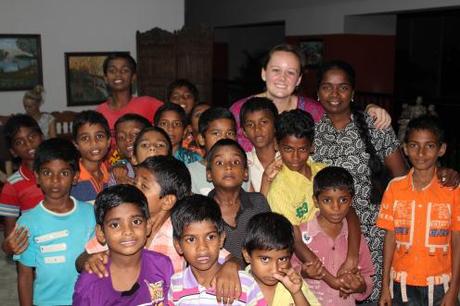
I can honestly say the past five months were the best of my life. I learned a lot of things about myself, good and bad, and I figured out what I believe are the most important things in life. My first summer in India a woman named Amy Antonelli – who was instrumental in starting the volunteer program – said “In India, you are your best self.” It’s so true and has stuck with me. You don’t have room to let the petty stuff of life get in the way because you see a world of people who will never understand what it means to not have their email get pushed through to their phone or get mad at their parents for not letting them get a car at 16. It’s a world where people are surviving on a day-to-day basis, hoping they can feed and clothe their families for the next month.
There was one point when I was at one of the colonies and I had my iPod touch, my wallet and a few other personal belongings in my bag. I realized that I probably had more (including all the contents of my wallet) in that one little bag than those families would ever have in their entire lives. It’s the most humbling place in the world and I think it’s something everyone should experience at least once in their lives.
I’ve been home for about six weeks now and I’m still not fully “back.” I have a hard time looking at my pictures and videos, and I have about 7,000, because it makes me want to jump on a plane in that moment and get back there. The kids, the people in the colonies, the Rising Star staff, other volunteers and India itself get under your skin and hold on tight. It has a huge piece of my heart that’s probably never going to fully come back.
I would like to go back every two years, at least, to see the kids. Being there for the amount of time that I was, I bonded with a number of children, especially the boy I sponsor. I want to go back as often as I can to see them, how they are growing up and the magic that is India.
Useful Links:
Website: www.risingstaroutreach.org
Twitter: @RisingStarOut
Facebook: www.facebook.com/Rising-Star-Outreach
Kim’s Blog: kimbelree.wordpress.com
(where she chronicles her time spent in India)
Rising Star’s Volunteers’ Blogs: www.risingstaroutreach.org/bloglist.
